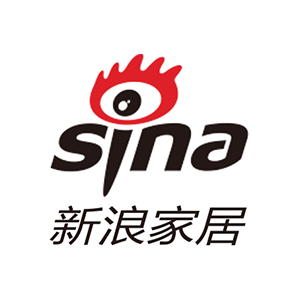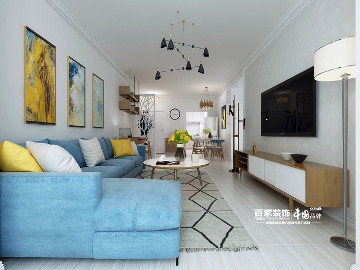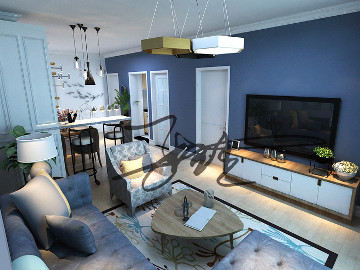非常建筑作品 | 吉首美术馆: 隐身遥远边城的廊桥
摘要:客户: 吉首市德夯风景名胜区管理处 地点: 湖南省吉首市乾州古城 类型: 文化建筑 主持建筑师: 张永和, 鲁力佳

△鸟瞰
Bird's-eye view
社会工程
美术馆所在的吉首市是湘西土家族苗族自治州的州府。起初地方政府考虑在城外的开发区内选择建设用地,然而我们作为建筑师则建议将美术馆设立在人口密集的乾州古城的中心区,因为我们认为文化设施应该尽可能地方便居民使用。穿城而过的万溶江流经吉首的核心地带,因此我们构想了一座横跨江面、兼做步行桥的美术馆。我们希望人们不仅会专程去欣赏艺术,也可以在上班、上学、或者购物的途中与艺术邂逅。
A Social Cause
The city of Jishou, where the Jishou Art Museum is located, is the regional capital of Xiangxi (western Hunan), a minority autonomous zone. Initially, the municipal government considered parcels of lands in the development zone outside the city; however, we the architects proposed to build the art museum in the center of the old town because we believed that a cultural facility should be easily accessible. A river called Wanrong runs through the middle of Jishou, which makes the most central location for the art museum over the water course and the art museum then doubles as a pedestrian bridge naturally. We hope that people in Jishou would not only make a special trip to see art but will also encounter art on their way to work, to school, or to shop.

△黄昏中的吉首美术馆
JAM in early evening
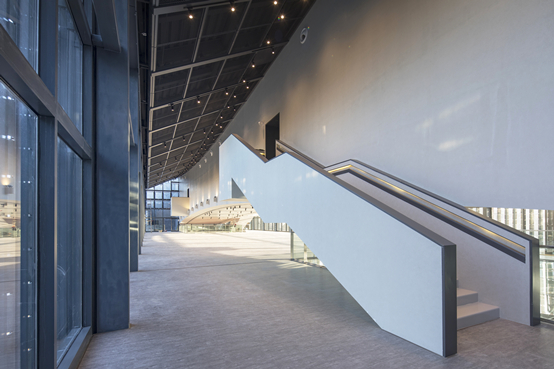
△大展厅
Great Exhibition Hall
插入肌理
如今,许多诸如博物馆和剧院的当代文化设施都被当作独立的纪念物而远离社区。我们认为美术馆不应该从区位上脱离受众,因此将其嵌入到现有的城市肌理中,两岸的桥头部分与万溶江畔的排屋紧密相连在一起。这些排屋包含了店铺、餐馆、小旅馆,楼上通常便是屋主的居所。因此,吉首美术馆位于河两岸的入口都可以被视作混合功能街道界面的一部分,从而融入当地人的日常生活。
Urban Intervention
Typical contemporary cultural institutions in China, such as museums and theaters, are treated as freestanding monuments, from away from the communities. In Jishou, since we thinkanart museum should not be isolated from its users, it is inserted into the existing urban fabric, which is built up with row buildings along the Wanrong River that house shops, restaurants, bed-&-breakfests, often with owners living upstairs. Therefore, the front entrances of the Jishou Art Museum on both riverbanks are part of the mixed-use street walls and integrated into the everyday life.

△吉首美术馆嵌入现有城市肌理
JAM as an insertion in existing urban fabric

△东侧入口
East Side Entrance
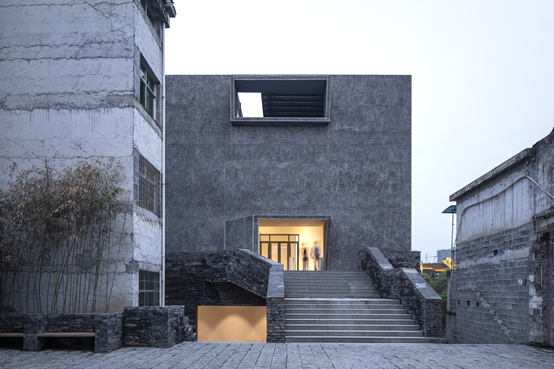
△西侧入口
West Side Entrance

△西立面局部
West Facade close-up

△从相邻街道看吉首美术馆
Looking at JAM from nearby street
转释传统
被称作风雨桥的廊桥在我国山区里有着悠久的历史。除了跨越河流或山谷的功能,它们也是供旅人休憩、商贩摆摊售卖的公共空间。作为对这一古老建筑类型的当代诠释,我们的设计在保持传统廊桥的交通与歇脚功能的同时引入新的艺术内容,并将风雨桥的形式语言加以现代化。
Reinterpretation of Tradition
Covered bridge has a long tradition in this mountainous region of China and named Fengyu Qiao, meaning wind-and-rain bridge, which is notonly used for crossing river or valley but a public space where travellers take a rest and vendors set up stands. Our design creates a contemporary interpretation of the age-honored building type. We introduced art as a new program on a covered bridge while maintaining pedestrian traffic and stop meanwhile translating the formal language of the Fengyu Qiao into a modern one.

△风雨桥
Fengyu Qiao

△万溶江上的吉首美术馆
JAM over Wanrong River
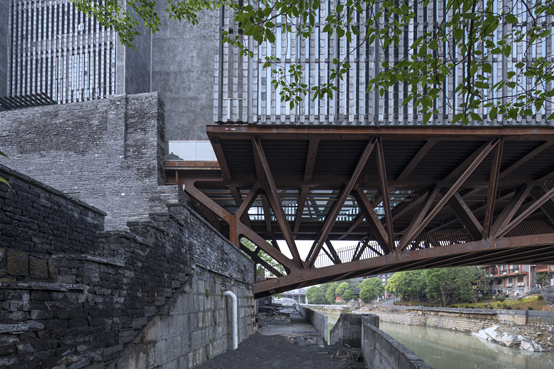
△钢结构桥局部
JAM steel bridge structure close-up
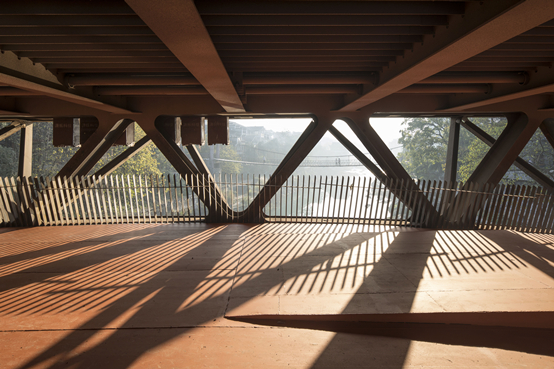
△步行桥层
Pedestrian Bridge Level
桥梁建筑
美术馆以桥上桥的形式构成。下层的钢桥是开放的桁架结构,为行人通过提供了一个带顶的街道,同时也助于疏导洪流;上层的现浇混凝土拱桥内部设有画廊。两桥之间是一个由玻璃幕墙和筒瓦遮阳系统围合而成的大展厅,用于举办临时展览。美术馆的服务空间如门厅、行政办公、商店和茶室则被安置在两端的桥头建筑内。人们可以从任意一侧河岸进入美术馆。
A Bridge-Building
The art museum is composed of two bridges, one on the top of the other. The lower level is an open steel truss structure thatresemblesa roofed street for pedestrians and allows the flow of floods ; the upper level is a concrete archcast in-situwith a painting gallery inside. In between the two bridges, glazed walls and tiled shading system enclose the art museum's main hallfor temporary exhibitions. Supplementary spaces to the art museum, such as the entrance hall, administrative office, shop, and tearoom, are situated in the two bridgeheads at either end. People can enter the museum from either side of the river.

△透过步行桥天窗仰望大展厅
Pedestrian Bridge Level with skylight looking into Great Exhibition Hall

△大展厅内混凝土拱桥下方
Great Exhibition Hall under the concrete bridg
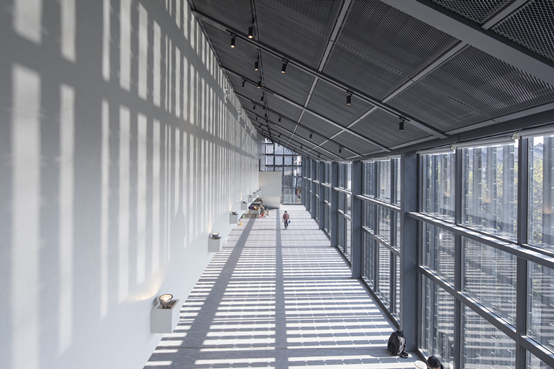
△由三楼平台看大展厅
Great Exhibition Hall from 3rd floor balcony

△桥身立面筒瓦遮阳系统
JAM riverside facade with tiled shading
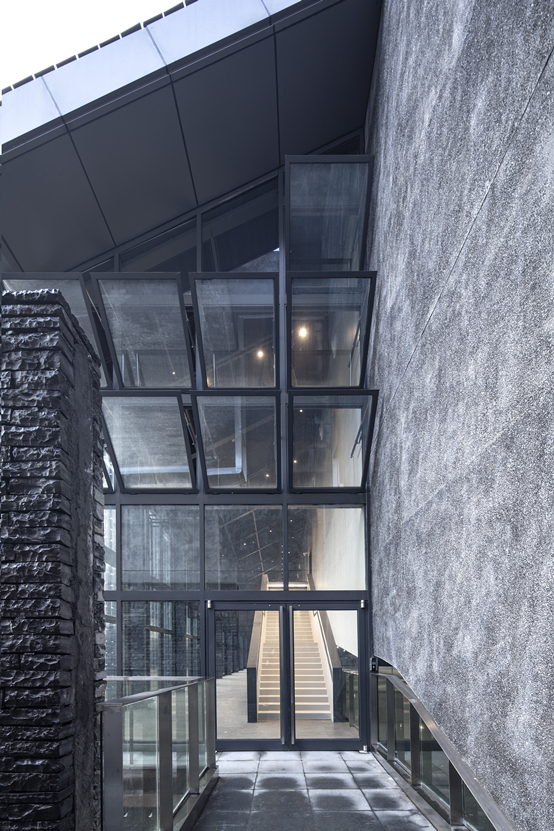
△大展厅末端玻璃幕墙
End Glass Wall of Great Exhibition Hall

△东侧入口大厅
East Entry Lobby
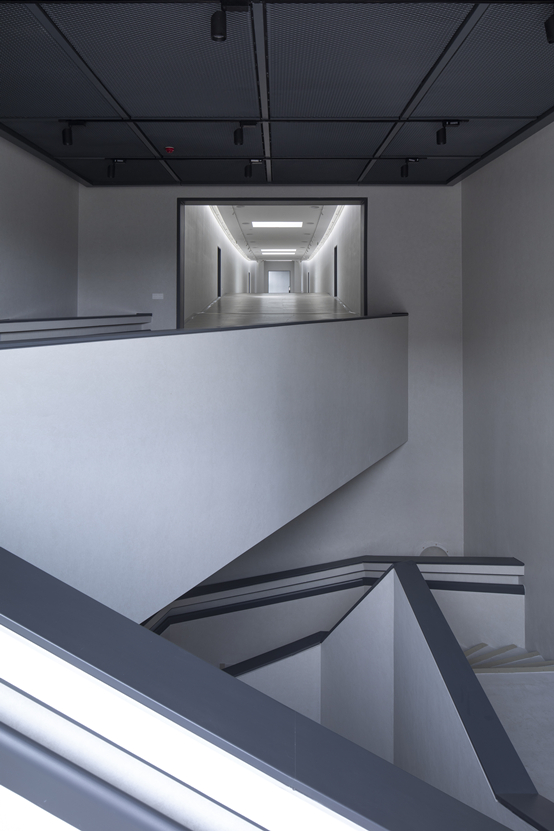
△东侧大厅楼梯间
East Lobby Staircase
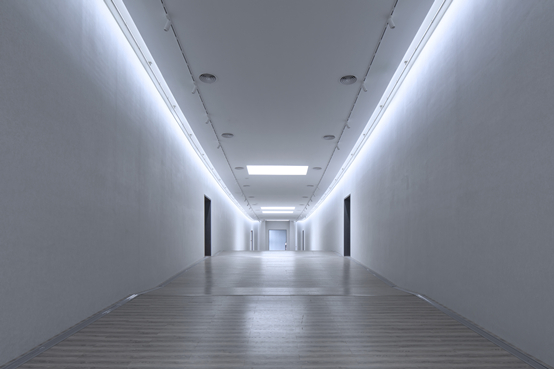
△三楼混凝土拱桥内部画廊
3rd floor Painting Gallery inside concrete bridge
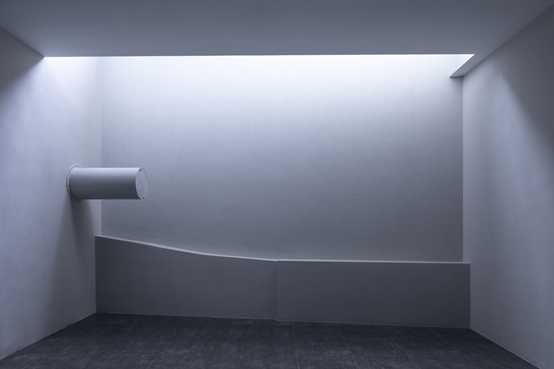
△过渡空间左墙上的混凝土预应力锚索紧固件
Transitional space with post-tensioned prestressing bolt for concrete bridge structure on left wall



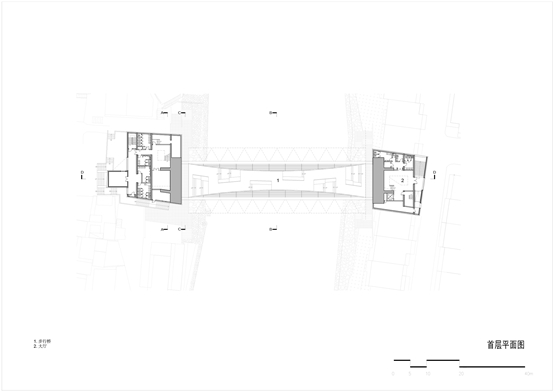


项目信息/Project Info
客户/Client: 吉首市德夯风景名胜区管理处/ Jishou Qianzhou Historic Town Administration
地点/Location: 湖南省吉首市乾州古城/Qianzhou Historic Town, Jishou, Hunan, China
类型/Building Type: 文化建筑/Cultural Architecture
主持建筑师/Principal Architects: 张永和, 鲁力佳/Yung Ho Chang, Lijia Lu
项目团队/Project Team: 梁小宁,杨普,刘昆朋,粟思齐,饶岗/Liang Xiaoning, Yang Pu, Liu Kunpeng, Su Siqi, Rao Gang
结构咨询/Design Consultant: 常镪/Chang Qiang
设计合作:湖南省交通规划勘察设计院/ Hunan Provincial Communications Planning, Survey & Design Institute
建筑面积/Building Area: 3535.4m2
结构材料/Structure and Material: 钢桁架结构,钢筋混凝土拱结构/Steel truss, reinforced concrete arch
设计周期/Design Period: 2013-2016
竣工时间/Completion Time: 2019
摄影师/Photographer: 田方方/Tian Fangfang

张永和
美国注册建筑师/美国建筑师协会学院院士
非常建筑创始人、主持建筑师
美国麻省理工学院建筑系教授、前系主任
同济大学教授
曾在中国和美国求学,于1984年获得伯克利加利福尼亚大学建筑系建筑硕士学位。自1992年起开始在中国实践,1993年在美国与鲁力佳创立非常建筑。他曾荣获诸多奖项,如1986年荣获日本新建筑国际住宅设计竞赛一等奖第一名,美国“进步建筑”1996年度优秀建筑工程设计奖,2000年获联合国教科文组织艺术贡献奖,2006年获美国艺术与文学院的学院建筑奖,2016中国建筑传媒奖实践成就大奖 ,2019年Domus世界最佳100+建筑事务所, 2020年度美国建筑师协会建筑奖等。至今为止出版发表多本书籍和专著,包括英语专辑《Exhibition as Construction Experiment》,中英双语《世界建筑 - 造的现代性:张永和》,英法双语图书《Yung Ho Chang / Atelier Feichang Jianzhu: A Chinese Practice》以及意大利语图书《Yung Ho Chang:Luce chiara,camera oscura》等。他曾多次参加国际建筑及艺术展,从2000年至2008年,先后六次参加威尼斯双年展。曾在美国和中国的多所建筑学校任教。1999至2005年任北京大学建筑学研究中心创始人、教授;曾任2002年美国哈佛大学设计研究院丹下健三教授教席;2011-2017年任普利兹克建筑奖评选委员会评委。
Yung Ho Chang, FAIA
Founding Partner and Principal Architect, Atelier Feichang Jianzhu
Professor and former Head, Architecture Department, MIT
Professor, Tongji University
Educated both in China and in the US, Chang received Master of Architecture degree from the University of California at Berkeley in 1984. Since 1992, he has been practicing in China and established Atelier Feichang Jianzhu (FCJZ) with Lijia Lu in 1993. He has won a number of prizes, such as First Place in the Shinkenchiku Residential Design Competition in 1986, a Progressive Architecture Citation Award in 1996, the 2000 UNESCO Prize for the Promotion of the Arts, and the Academy Award in Architecture from American Academy of Arts and Letters in 2006, and 2016 China Architecture Media Award Practical Achievement Prize. 2019, FCJZ has been recognized as one of the 100+ Best Architecture Firms 2019 by Domus magazine. Recently, Jishou Art Museum has won the American Institute of Architects (AIA) 2020 Architecture Award. He has published a number of books and monographs, including Exhibition as Construction Experiment in English, World Architecture issue – The Modernity of Making: Yung Ho Chang in Chinese/English, Yung Ho Chang / Atelier Feichang Jianzhu: A Chinese Practice in English/French and Yung Ho Chang: Luce chiara, camera oscura in Italian. He participated in many international exhibitions of art and architecture, including six times in the Venice Biennale since 2000. He has taught at various architecture schools in the USA and China; he was a Professor and Founding Head of Graduate Center of Architecture at Peking University from 1999 to 2005; he held the Kenzo Tange Chair at Harvard GSD in 2002 and the Eliel Saarinen Chair at Michigan in 2004. From 2011 to 2017, he was a Pritzker Prize Jury member.
标签:
热门资讯排行
- 资讯专区
- 图片专区
- 品牌专区



